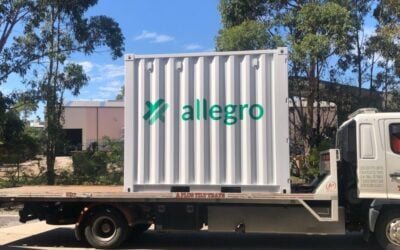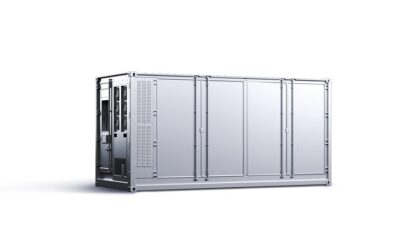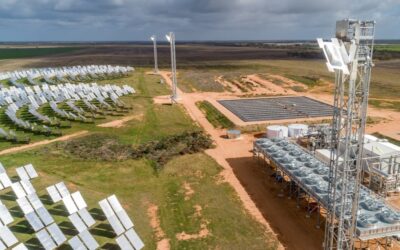SunEdison, the company Jigar Shah helped create and by some measures the biggest renewable energy developer in the world, recently purchased utility-scale storage startup Solar Grid Storage. Image: SunEdison.
Lessons learned from solar could help develop financing solutions for energy storage that could be “key” to unlocking the potential of the technology, strongly benefiting PV in the process, Jigar Shah has said.
The well-known clean energy entrepreneur and co-founder of SunEdison, now leading specialist finance company Generate Capital, will be delivering a presentation this week at the US Energy Storage Association annual conference in Dallas, Texas.
Enjoy 12 months of exclusive analysis
- Regular insight and analysis of the industry’s biggest developments
- In-depth interviews with the industry’s leading figures
- Annual digital subscription to the PV Tech Power journal
- Discounts on Solar Media’s portfolio of events, in-person and virtual
Speaking about how the adoption of storage can build on renewable energy’s foundations, in terms of how to find financing for projects, Shah told PV Tech, his talk would in some ways focus on using the years of experience gained from solar to provide the mainstream investment and lending communities with reassurance.
“A lot of what I’m going to talk about essentially is that we think that financing is the key, right? Solar financing is already available, but solar structures scare banks, so my presentation is going to be more about how do you stop yourself from scaring the banks,” Shah said.
“You don’t want to screw yourself out of the sale of a solar system because the bank says ‘well, we don’t like this storage’, and you’ve already sold the storage to the customer, because the customer doesn’t want solar unless you add storage.”
“
I think the part that people are missing is that storage is going to unlock a 10 times larger market for solar.
The US installed 5.8MW of storage in the first quarter of this year, up 16% on the same period of 2014, GTM Research has found. Image: Younicos.
The big picture
In the first quarter of this year, analysis firm GTM Research found that the US installed 5.8MW of energy storage, which although not a huge amount is significant in context. The figure represents a 16% leap from the first quarter of last year. Customer-sited, or behind-the-meter storage similarly saw only 1.6MW deployed in Q1 2015, but this represents a more than 130% increase over the same period of last year. GTM called it a “strong first quarter” for the year.
Nonetheless, deployment of storage in the US has been concentrated on a number of dominant markets, including California and the service area of regional transmission operator PJM, the GTM Energy Storage Monitor report found. PJM has been notable for providing a market for grid-balancing frequency regulation services that utility-scale energy storage can fit into, with many in the industry talking enthusiastically of the PJM market being well designed for this purpose.
As Shah reflected, with its different scales, different technologies and ultimately different uses, energy storage can be more difficult to categorise than solar.
“There are a lot of people who want to say storage is a category just like solar is a category, but storage is only valuable in that it provides value to its customer, and that comes from different aspects,” Shah said.
On the utility-scale side, value from storage could be in providing frequency regulation and ancillary services, or to compete with natural gas peaker plants in providing capacity, Shah said. Meanwhile, the drivers for behind the meter systems include reducing demand charges where applicable and load shifting for solar. With some believing that the US is likely to move towards introducing peak demand and time of use charges for residential electricity tariffs, Shah said that ultimately, storage could unlock a greater potential for solar.
“So I think that each of these markets require different technologies. So li-ion only works for high power applications whereas lead acid and flow batteries might be better for four hour applications.”
“I don’t think storage is an industry in itself, it’s only an industry insofar as it enables other things. Storage either enables solar, or enables more efficient grid operations… I think the part that people are missing is that storage is going to unlock a 10 times larger market for solar.”
Rethinking the banks’ three rules
In terms of his talk at the ESA conference this week and the topic of not frightening away financing for projects, Shah said that in many ways it was a question of tailoring financing solutions to meet the technology, which companies with most experience of renewable energy would be best placed to do.
“At the end of the day, the banks have already set down their rules. They have three rules,” Shah said.
“One rule is that technology needs to have a minimum of 10 years’ experience in the field. Nothing comes out of the laboratory! Number two, there has to be a contract that protects investors’ interest, so it doesn’t allow customers to get out of paying for it. The third is that there has to be sufficient maintenance of your units to ensure that there’s going to be good quality operations for the life of the contract. Those are the three rules. How they’re getting interpreted is the challenge.”
According to Shah, “there’ll never be one answer”. From the point of view of his company, Generate Capital, he said the experience gained from years in renewables and related fields means it can “interpret that information [on the banks’ rules for lending] differently than, say, Citibank”.
“So we might say, well, we’re going to charge a higher interest rate but we’re ok with five years of data, these provisions in the contract and we’re ok with this level of maintenance organisation.
“This storage industry has been more mature than these banks are giving them credit for. So I’m willing to come in earlier, and in the process I’ll charge a higher interest rate but I think that the projects can afford the high interest rate.”
Jigar Shah says that those with experience and knowledge of renewables and related technologies are likely to be more comfortable lending to energy storage projects than those which do not. Image: CASE (Coalition for Affordable Solar Energy)..






